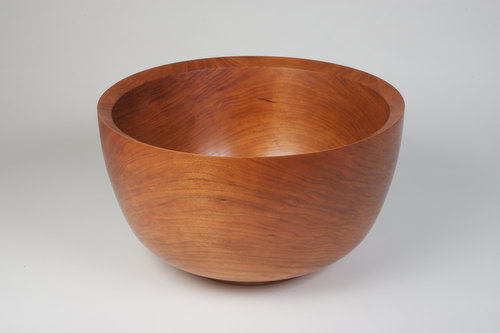And "bole" ? What's that?
Bole
/bōl/ 1. The trunk of a tree
Use that smart phone to call the Boss and then buck how he says to.
Granted, the software is something more for the small forest owner that has the time, and wants to optimize compensation from the mill. Production loggers would use specs from the boss.
In the virtual world, Oregon State had a computer program in 1990.
I had seen reference to that poking around the internet. Couldn't find where it was available though.
It does exist. Here the buyer gives you a list of desired lengths and diameters and percentages of each grade. The software is pretty simple, it's basically two matrixes, a value matrix and a distribution matrix. You can build the software at home using excel, if interested.
If it exists I'd sure appreciate info on where to find it, I'm too lazy to write it.
If one were to tackle the job, yes, several matrices, one for each species price table, one for the Scale table (Scribner Decimal C here). Then enter species, bole length and sample diameters, say at 8' intervals. Software would have to run scenarios of different possible log lengths at various diameters calculated for scale and the price table, a rather dynamic process. I think it would take more than excel, at least for my excel skills.
This could possibly be simplified if a known taper factor by species for the locale could be used.
Shouldn't the ultimate software be located in the grey matter located between your ears.
Indeed it is. But then again there are tools for a reason, hence chainsaws vs handsaws.:msp_w00t:
Unless you are in some pretty odd ball stuff there won't be enough price difference to worry about. Standard bucking and maybe poles and that should be about it.
Here is a grey matter example analysis of a particular bole 63' long, 12" DBH, short logs. Options shown are 3x20'6 vs 3x16'6 + 1x12'6. Difference is $6.30 paid by the mill. Multiply that by 500 trees, it becomes significant.
Option 1: 61’6 = 3 x 20’6 @ $330; 20’6 x 11” = 80bf, 20’6 x 9” = 40bf, 20’6 x 6” = 20bf, TotBF=140 Tot$= 140*.33= $46.20
Option 2: 62’0 = 3 x 16’6 @ $310, 1 x 12’6 @ $290; 16’6 x 11” = 70bf, 16’6 x 10" = 60bf, 16’6 x 7.5" = 30bf, 12’6 x 6” = 10bf, TotBF=170 Tot$=160*.31 + 10*.29 = $52.50
If it takes 10 minutes to measure the tree and enter into the software, the return on time spent in the above case is $38 per hour. $75 if it takes 5 minutes.






